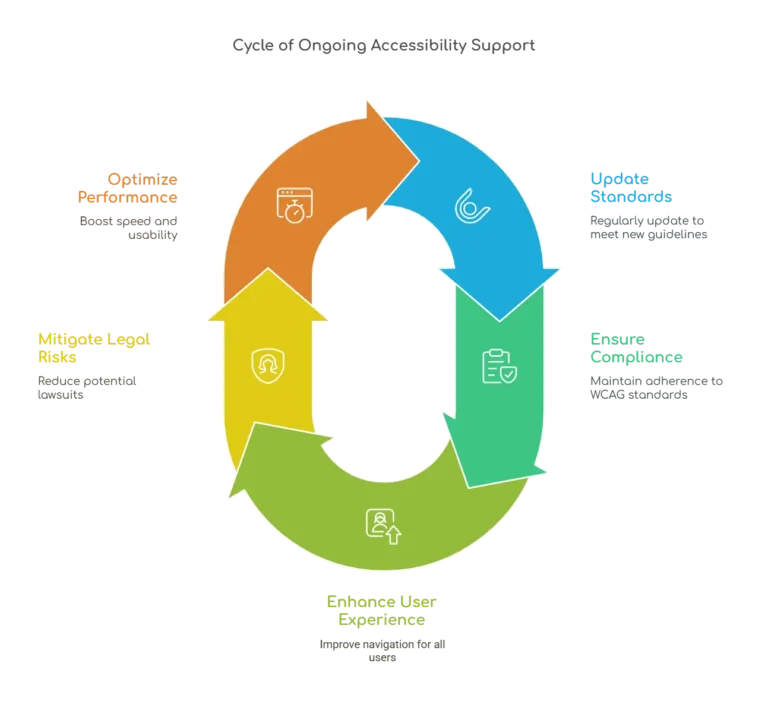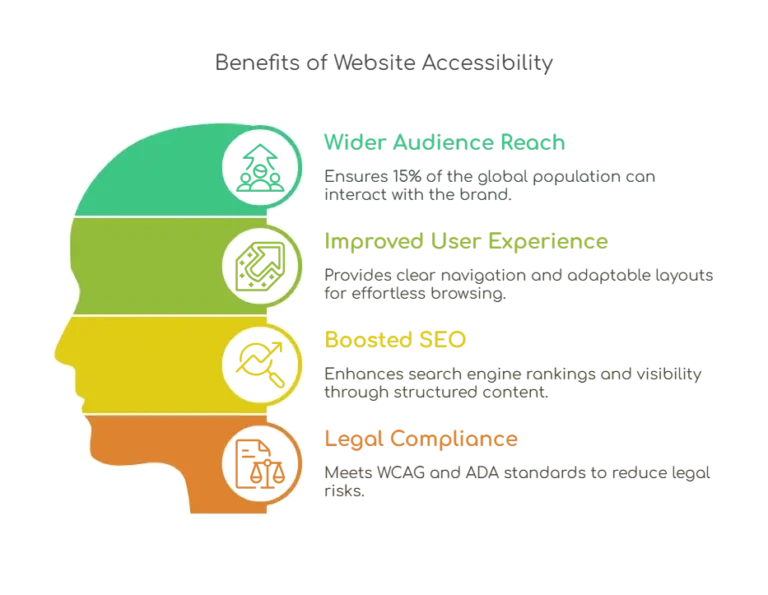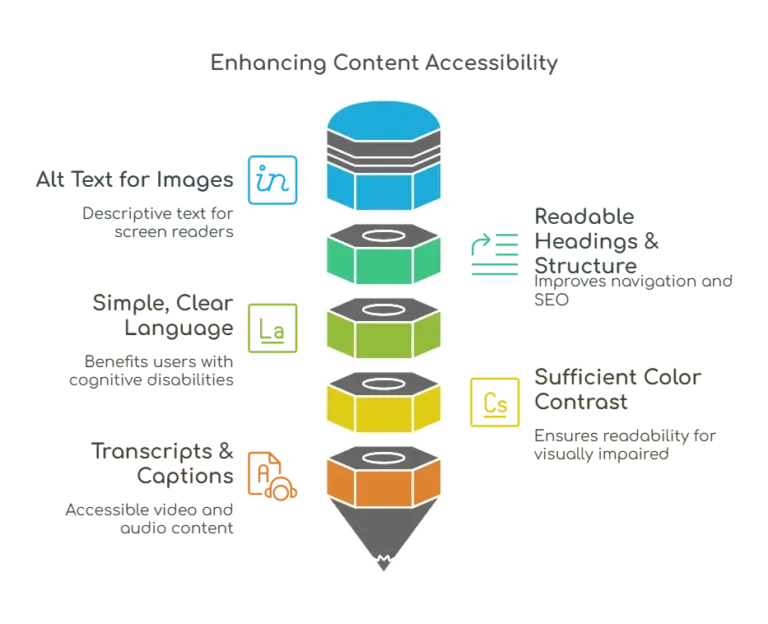Ever wondered how to speed up your WordPress website by removing unused CSS using optimization plugins, stylesheets, file optimization, and cache plugins? In this post, we’ll dive into the nitty-gritty of optimizing your WordPress site by eliminating unnecessary CSS code and file optimization. Say goodbye to sluggish page loads and hello to a snappier user experience with faster page speed. We’ll explore the essential steps, tools, and best practices for efficiently decluttering your WordPress theme’s stylesheet, including optimizing CSS delivery, critical CSS, and CSS selectors. So, if you’re ready to supercharge your site’s performance and leave visitors impressed with lightning-fast load times, keep reading to optimize your page speed and enhance your WordPress page with page builders and icons.
Understanding Unused CSS

Faster Page Load Times
Removing unused CSS stylesheets from your WordPress site can remove icons and have a significant impact on its page speed. By removing stylesheets, you can achieve faster page load times. When a website has an excessive amount of unused CSS stylesheets, it adds unnecessary weight to the pages, leading to slower loading times.
Tools like Google’s PageSpeed Insights report will suggest removing unused CSS stylesheets if it detects more than 10kb of such files on your web pages. If your WordPress site contains a substantial amount of unused CSS, removing these effects can noticeably slow down your site speed.
Regularly analyzing and auditing your website’s CSS, wordpress page, page builders, is crucial for identifying redundant or unused styles that might be impacting its performance negatively. This process helps in optimizing rendering and improving overall site speed by removing unused CSS features.
Identifying Redundant Styles
Identifying redundant or unused CSS is not always straightforward. However, tools like Chrome DevTools are invaluable for assisting in this task of removing unused CSS styles and features. These tools can help you pinpoint which specific rules within the used css stylesheet are not being utilized by any elements on the page.
It’s important to note that about 28% of websites feature more than 1 MB of unused CSS contributing to their slow loading time according to reports from Google’s PageSpeed Insights tool. Regularly reviewing and auditing your website’s CSS files becomes essential in order to use and remove unnecessary styles effectively.
Diagnosing Page Speed Issues
Unused CSS contributes significantly to slow page load times and other performance issues experienced by visitors navigating through websites. Diagnosing and addressing these issues with used CSS and CSS styles is paramount for ensuring a better user experience on your WordPress site.
Importance of CSS Optimization
Impact on Core Web Vitals
Optimizing CSS files is crucial for improving Core Web Vitals, which measure user experience on websites. Unused CSS can lead to a poor Largest Contentful Paint (LCP) score in Core Web Vitals, affecting loading times and visual stability. For example, Lighthouse and Google PageSpeed Insights may advise you to Reduce Unused JavaScript or to Reduce Unused CSS due to their impact on these metrics.
By removing unused CSS, you can positively impact Core Web Vitals such as Largest Contentful Paint (LCP) and Cumulative Layout Shift (CLS). This optimization enhances loading speed, interactivity, and visual stability. When users encounter faster-loading pages with improved visual stability and used CSS styles, it contributes significantly to a positive user experience.
SEO Benefits
In addition to enhancing the user experience, optimizing your website’s CSS has significant benefits for search engine optimization (SEO). Removing unused CSS reduces page load times, contributing directly to better search engine rankings. Faster-loading pages tend to rank higher in search results because they provide a better user experience by using CSS.
Furthermore, by streamlining your stylesheets through the removal of unnecessary code and using CSS effectively, you contribute positively towards creating an efficient website that is more likely to engage users effectively. This enhanced engagement using CSS further aids in lowering bounce rates while increasing overall interaction with your content.
User Experience Enhancement
Removing unused CSS not only improves technical aspects but also enhances the overall usability of your website. By using CSS to reduce clutter and improve readability through streamlined stylesheets, you make it easier for users to navigate and interact with your site smoothly.
For instance: If there are multiple versions of the same style rules within different parts of a stylesheet or if there are entire sections that aren’t used at all across various webpages on WordPress – this could be considered “unused” or “dead” code that should be removed.
Tools for Manual CSS Cleanup
Chrome Dev Tools
If you’re looking to remove unused CSS on WordPress, Chrome DevTools is an indispensable ally. This powerful toolset designed for web developers offers a range of features that can aid in the optimization process used css. For instance, it allows you to use inspect and debug CSS, providing real-time feedback as you work on your website’s code.
Moreover, Chrome DevTools enables you to analyze network activity, audit performance, and used CSS. It doesn’t stop there; this tool also helps identify any unused CSS rules lurking within your website’s stylesheet. In fact, Google’s PageSpeed Insights report may specifically advise reducing unused CSS if it detects more than 10kb of such files on your page.
Code Editors
In addition to Chrome DevTools, code editors like Visual Studio Code or Sublime Text are invaluable for use. These editors come loaded with features that make identifying and removing unused CSS a breeze. From syntax highlighting to code suggestions and plugins tailored for CSS optimization, these tools streamline the entire process by use.
Lighthouse, another Google-developed tool much like PageSpeed Insights, might also recommend reducing unused JavaScript or CSS after analyzing your site’s performance metrics.
Automatic CSS Removal Techniques
WordPress Plugins
If you’re using WordPress, there are several plugins designed to streamline the process of removing unused CSS from your website. For instance, popular plugins like WP Rocket and Autoptimize use specific features for optimizing CSS files. With WP Rocket, activating the ‘Remove Unused CSS’ option enables you to specify which CSS selectors or rules should not be removed through the ‘CSS safelist’ box. This means that essential styles can be preserved while unnecessary ones are eliminated.
In addition to removing unused CSS, these plugins also provide other optimization options such as combining Google Fonts files and minifying HTML. By leveraging these tools, you can significantly improve your website’s performance by using them without delving into manual intervention.
Minimization Strategies
Another effective approach involves minimizing your CSS files by eliminating unnecessary characters, whitespace, and use. This technique is known as minification and it plays a crucial role in reducing file size. By doing so, you can enhance loading speed since smaller file sizes translate to quicker load times.
Moreover, combining multiple CSS files into a single file offers several benefits including reducing HTTP requests and streamlining the overall loading process for visitors. With fewer individual requests being made to fetch separate style sheets, your site’s performance will likely see noticeable improvements.
Furthermore, employing compression techniques like Gzip further contributes to decreasing the size of your CSS files. By compressing them before they’re sent over the network from server to client browser, Gzip helps in conserving bandwidth and accelerating page load times.
Best Practices for a Lean WordPress Site
Design Considerations
When dealing with removing unused CSS on WordPress, it’s crucial to consider the impact on your website’s design. You must ensure that essential styles are not accidentally removed during the optimization process. Regularly reviewing and updating your CSS is vital to maintain a cohesive and visually appealing design.
For example, if you use a theme or plugins that generate their own CSS, removing unused styles might inadvertently affect the appearance of certain elements on your site. Therefore, it’s important to carefully analyze which styles are truly unnecessary before removal.
It’s also essential to keep in mind that while optimizing for performance is crucial, maintaining an aesthetically pleasing and functional design should not be compromised. By prioritizing critical styles and conducting thorough testing after each optimization step, you can strike a balance between speed and visual appeal.
Critical Path CSS
Optimizing Critical Path CSS can significantly enhance initial page load times for your WordPress site. This refers to the minimal set of styles required to render above-the-fold content – the portion of a webpage visible without scrolling.
Tools like Google’s PageSpeed Insights can help identify Critical Path CSS and guide optimization efforts by highlighting which styles are necessary for rendering above-the-fold content quickly.
For instance, by identifying these critical styles and ensuring they are loaded first, you can prioritize the display of essential content while deferring non-essential resources. This approach minimizes render-blocking resources and optimizes loading performance for improved user experience.
Essential Steps for Speed Improvement
Optimizing Style.css File
The style.css file is a crucial component of WordPress themes. It often contains unused or redundant styles, which can slow down the website’s performance. By removing these unused styles, you can significantly enhance your site’s speed and reduce the overall file size. Regularly reviewing and optimizing the style.css file is essential to maintain an efficient website.
Optimizing the style.css file involves identifying and removing any unnecessary code that may be bloating the stylesheet. This process not only reduces the file size but also ensures that only relevant styles are being loaded when users visit your site. For example, if there are specific styles in your theme that are no longer used due to design changes or feature updates, these can be safely removed from the style.css file.
By streamlining your style.css file, you ensure that your website loads faster, providing a better user experience while also positively impacting your search engine rankings. Tools like Google’s PageSpeed Insights or GTmetrix can help you identify which CSS rules are not being used on a page so that you can remove them from the stylesheet accordingly.
Leveraging CDN
Content Delivery Networks (CDNs) play a vital role in improving website performance by caching static assets such as CSS files. By offloading CSS files to a CDN, you effectively reduce server load and improve global accessibility of your website. CDNs ensure faster delivery of CSS files to users around the world, resulting in improved page load times.
Implementing a CDN for delivering CSS files offers numerous benefits such as reduced latency, increased redundancy, and enhanced security for serving style-related assets across different geographical locations. CDNs provide scalability during traffic spikes by efficiently distributing content closer to end-users.
When conducting a speed test on websites leveraging CDNs for serving CSS files compared to those without this optimization technique in place will demonstrate noticeable differences in terms of loading times and overall performance metrics.
Advanced Optimization Techniques
Handling Dynamic Elements
Dynamic elements on your website may require specific CSS rules that are not used on every page. For example, if you have a contact form or a product search function that only appears on certain pages, the associated CSS rules for these elements are unnecessary to load on every page.
Use conditional loading techniques to apply CSS only when necessary for dynamic elements. By doing this, you can ensure that the CSS is loaded only when the specific element requiring it is present on the page.
Avoid loading unnecessary CSS for static pages to optimize performance. Static pages should not be burdened with additional CSS styles meant for dynamic content they do not contain. This ensures that each page loads only what’s needed and nothing more, improving overall site performance.
Offloading Page-Specific CSS
Move page-specific CSS to separate files instead of including them in the main stylesheet. When all styles are included in one large file, even those unique to a single page, it results in unused code being loaded across multiple pages.
Loading page-specific CSS only when required reduces the size of the primary stylesheet. By separating out these styles into individual files and calling them as needed, you prevent unnecessary code from being loaded site-wide.
This approach improves performance by minimizing the amount of unused CSS loaded on each page. It ensures that visitors don’t download extraneous code unrelated to their current browsing experience while still having access to all necessary styling when they need it most.
Troubleshooting Unused CSS Issues
Common Challenges
Identifying unused CSS can be tough, especially in complex websites. It’s not just about finding the unused styles but also ensuring that their removal doesn’t impact functionality or design. Balancing optimization with potential future changes is also a challenge.
In complex websites, it’s difficult to pinpoint all instances of unused CSS. Removing them without affecting how your site looks and works requires careful consideration. Keeping the balance between optimizing performance and accommodating future updates can pose challenges.
For instance, if you have a large WordPress site with multiple themes and plugins, identifying every bit of unused CSS can be like finding a needle in a haystack. Moreover, removing these styles without causing any adverse effects on the user experience is crucial for maintaining the integrity of your website.
Safest Removal Methods
Using tools like PurgeCSS or UnCSS provides safe ways to eliminate unused CSS from your WordPress site. These tools analyze your website’s pages and remove any styles that are not being utilized.
Manually reviewing and removing unnecessary styles based on analysis results is another secure method. By using developer tools to inspect your web pages’ elements, you can identify which styles are unused and then safely remove them from your CSS files.
Always remember to keep backups of your CSS files before making significant changes. This precaution ensures that if anything goes wrong during the process of removing unused css, you have a backup ready to restore order quickly.
Utilizing tools such as PurgeCSS or UnCSS allows for an automated approach to identifying and eliminating unwanted css code, providing efficiency while reducing human error in manual detection processes.
Maintaining Performance Post-Cleanup
Monitoring Tools
After removing unused CSS on WordPress, it’s crucial to monitor the impact of these optimizations. Utilize tools like Google Analytics or GTmetrix to track various performance metrics. These tools offer insights into page load times, user engagement, and other essential data points.
Monitoring tools play a vital role in evaluating the effectiveness of your optimization strategies. By analyzing the before-and-after data, you can gauge how removing unused CSS has influenced your website’s overall performance. For instance, if you notice a significant improvement in page load times after the cleanup, it indicates that the removal process was successful.
Continuous monitoring also helps identify areas for further improvement. If certain pages still exhibit slower load times despite cleaning up the CSS, this signals that additional optimization efforts are necessary for those specific sections of your website.
Continuous Optimization Strategies
To uphold optimal performance post-cleanup, it’s imperative to implement continuous optimization strategies for your website’s CSS files. Regularly audit and optimize these files to ensure they remain lean and efficient. By staying proactive in maintaining a streamlined CSS structure, you can sustain improved loading speeds and enhanced user experiences.
Staying updated with best practices and new techniques is also pivotal for ongoing success in removing unused CSS on WordPress sites. As technology evolves, new methods may emerge for more effective cleanup processes or better ways to streamline stylesheets. Keeping abreast of these advancements empowers you to refine your approach continually.
Continuously monitoring and analyzing performance metrics is key to identifying areas that require ongoing optimization efforts even after initial cleanup activities have been completed. This allows you to address any new instances of bloated code promptly before they start impacting site speed or user experience negatively.
Closing Thoughts
Congratulations on making it to the end! By now, you understand the impact of unused CSS on your WordPress site’s performance and the crucial role of optimization. Armed with knowledge about manual cleanup tools, automatic removal techniques, and advanced optimization methods, you’re well-equipped to trim the excess fat from your site’s CSS. Remember, a leaner site not only improves user experience but also boosts your SEO ranking. So, roll up your sleeves and get ready to optimize your WordPress site for peak performance!
Now it’s time to put your newfound knowledge into action. Start by identifying and removing unused CSS from your WordPress site using the tools and techniques discussed. Keep an eye on your site’s performance metrics as you make these changes. Happy optimizing!



